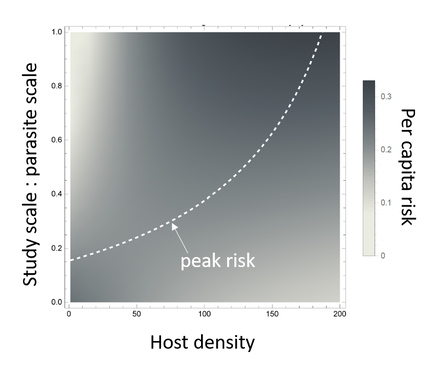SCALE-DEPENDENCE OF HOST-PARASITE INTERACTIONS

Epidemiological theory predicts that contact rate between hosts and parasites should increase with host density, thereby increasing parasite transmission and per capita infection risk - the parasite’s numerical response. At the same time, for a given number of infective stages in the environment, per capita infection risk can decrease with increasing host density because infective stages are divided (diluted) among all hosts in an area – the parasite’s functional response. Our empirical and theoretical work shows that the relative importance of the numerical and functional responses can depend on the scale of a study relative to the scale at which a parasite reproduces.
Recent papers published on this topic:
Stay tuned for:
- Stewart Merrill TE, Caceres CE, Gray S, Laird VR, Schnitzler ZT, Buck JC. 2022. Timescale reverses the relationship between host density and infection risk. Proceedings of the Royal Society B 289: 20221106.
- Buck JC, Perkins SE. 2018. Study scale determines whether wildlife loss protects against or promotes tick-borne disease. Proceedings of the Royal Society B 285: 20180218.
- Buck JC, Hechinger RF, Wood AC, Stewart TE, Kuris AM, Lafferty KD. 2017. Host density increases parasite recruitment but decreases host risk in a snail-trematode system. Ecology 98: 2029-2038.
Stay tuned for:
- Buck JC, Lafferty KD. Efficiency, patchiness, and scale interact to alter density-dependent risk in a consumer-resource model. In review.
